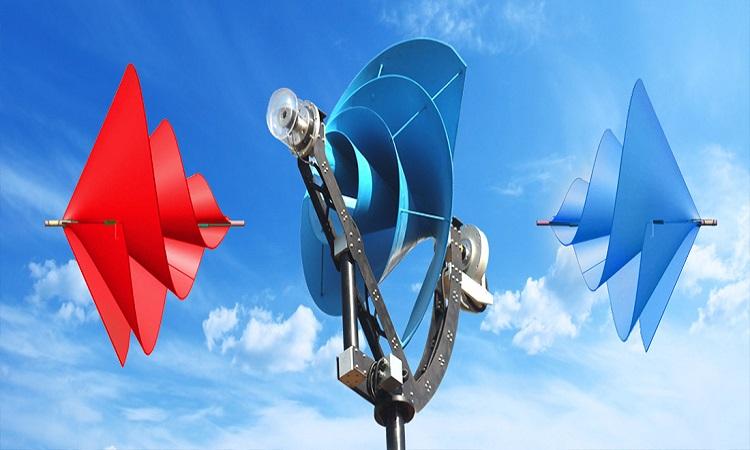North America Rooftop Wind Energy Market Targets Clean Energy Future

North America rooftop wind energy market, led by the U.S., will grow in 2026–2030F due to government support, tech advances, and rising demand for clean energy.
According to the TechSci Research report titled “North America Rooftop Wind Energy Market – By Country, Competition, Forecast & Opportunities, 2020–2030F,” the North America rooftop wind energy market was valued at USD 81.93 million in 2024 and is projected to reach USD 129.73 million by 2030, growing at a compound annual growth rate (CAGR) of 7.96% during the forecast period. This steady growth reflects increasing awareness and adoption of rooftop wind systems as a viable source of decentralized renewable energy, particularly in urban and industrial applications.
Technological Advancements Fuel Market Expansion
One of the primary drivers behind the growth of the North American rooftop wind energy market is the rapid evolution of small wind turbine technologies. Earlier versions of rooftop turbines were plagued by limitations such as excessive noise, inefficient performance in turbulent airflow, and visual disruptions in urban settings. However, the industry has undergone significant transformation in recent years, thanks to innovations in turbine design, materials, and performance optimization.
Modern rooftop wind turbines are now engineered with vertical-axis configurations, aerodynamic blades, lightweight composite structures, and even magnetic levitation systems. These features collectively improve performance in low and inconsistent wind conditions typically encountered in urban environments. As a result, these systems generate more stable energy outputs, operate more quietly, and require less maintenance—an important consideration for residential, commercial, and industrial adopters. Additionally, the reduction in moving parts has enhanced the durability and extended the lifespan of turbines.
Integration with smart grid systems and Internet of Things (IoT)-based monitoring solutions is another key development. These tools allow users to track real-time energy output, manage usage, identify faults early, and optimize overall system efficiency. This data-driven approach is increasingly appealing to tech-savvy consumers and businesses seeking greater control over their energy consumption.
Rise of Modular and Hybrid Energy Systems
In space-constrained urban environments, efficient use of rooftop real estate is critical. Manufacturers are now focusing on modular, scalable rooftop wind systems that can be integrated with solar photovoltaic panels and battery storage solutions. These hybrid systems maximize energy generation from multiple renewable sources, enhancing overall output and reliability. Such systems are particularly attractive in cities where energy demand is high but space is limited.
Many of the latest rooftop turbine models are designed to comply with stringent safety standards and environmental regulations, making it easier for users to obtain necessary permits and certifications. This regulatory compliance not only streamlines adoption but also reduces legal liabilities for property owners.
Corporations Lead in On-Site Wind Energy Adoption
An emerging and influential trend in the North American rooftop wind energy market is the increasing participation of corporations in renewable energy adoption. Companies across diverse sectors—including retail, logistics, technology, and manufacturing—are under mounting pressure to achieve ambitious sustainability targets and reduce their greenhouse gas emissions. Rooftop wind systems are gaining traction as a complementary solution to solar installations in these corporate sustainability strategies.
Large warehouse facilities, distribution centers, and corporate campuses are particularly well-suited for rooftop wind installations due to their expansive roof space and relatively fewer zoning restrictions. By integrating rooftop wind turbines into their energy infrastructure, these organizations are able to reduce dependence on the grid, lower operational costs, and demonstrate a visible commitment to environmental stewardship. Many firms also highlight these efforts within their Environmental, Social, and Governance (ESG) frameworks to boost stakeholder confidence and align with evolving investor expectations.
Browse over XX market data Figures spread through XX Pages and an in-depth TOC on the "North America Rooftop Wind Energy Market"
https://www.techsciresearch.com/report/north-america-rooftop-wind-energy-market/28805.html
Industrial Sector Emerges as a Key Application Area
Among various application segments, the industrial sector is currently the fastest-growing within the rooftop wind energy market in North America. Industrial facilities typically feature large, unobstructed roof surfaces and operate with high energy demands, making them ideal candidates for on-site renewable energy generation.
As industries face mounting pressure to cut emissions and improve energy efficiency, many are turning to rooftop wind systems to meet their internal sustainability objectives. Additionally, government incentives—including tax credits, net metering policies, and carbon reduction subsidies—are encouraging industrial users to invest in clean energy technologies. In some cases, rooftop wind systems are being incorporated into broader green building certifications, particularly in sectors such as automotive manufacturing, food processing, and warehousing.
The falling cost of turbine technology and increasing emphasis on energy independence are also contributing to the growth of rooftop wind energy adoption across industrial applications.
Mexico: A Rapidly Emerging Market
Within North America, Mexico is emerging as the fastest-growing country in the rooftop wind energy space. Several factors are contributing to this upward trend, including favorable wind conditions in regions such as Oaxaca and Baja California, strong government support for renewable energy, and rising investments from both the public and private sectors.
The Mexican government’s Energy Transition Law mandates a significant shift toward renewable energy sources, which has created a favorable policy environment for the adoption of rooftop wind technologies. Incentive programs and regulatory frameworks have made it more feasible for residential, commercial, and industrial users to invest in wind energy solutions.
Furthermore, declining equipment costs and increasing sustainability awareness among Mexican businesses are accelerating the pace of rooftop wind energy deployment. As a result, Mexico is positioning itself as a major contributor to the regional growth of decentralized renewable energy infrastructure.
As North America continues its transition toward cleaner energy
- Art
- Causes
- Crafts
- Dance
- Drinks
- Film
- Fitness
- Food
- الألعاب
- Gardening
- Health
- الرئيسية
- Literature
- Music
- Networking
- أخرى
- Party
- Religion
- Shopping
- Sports
- Theater
- Wellness
- Travels

